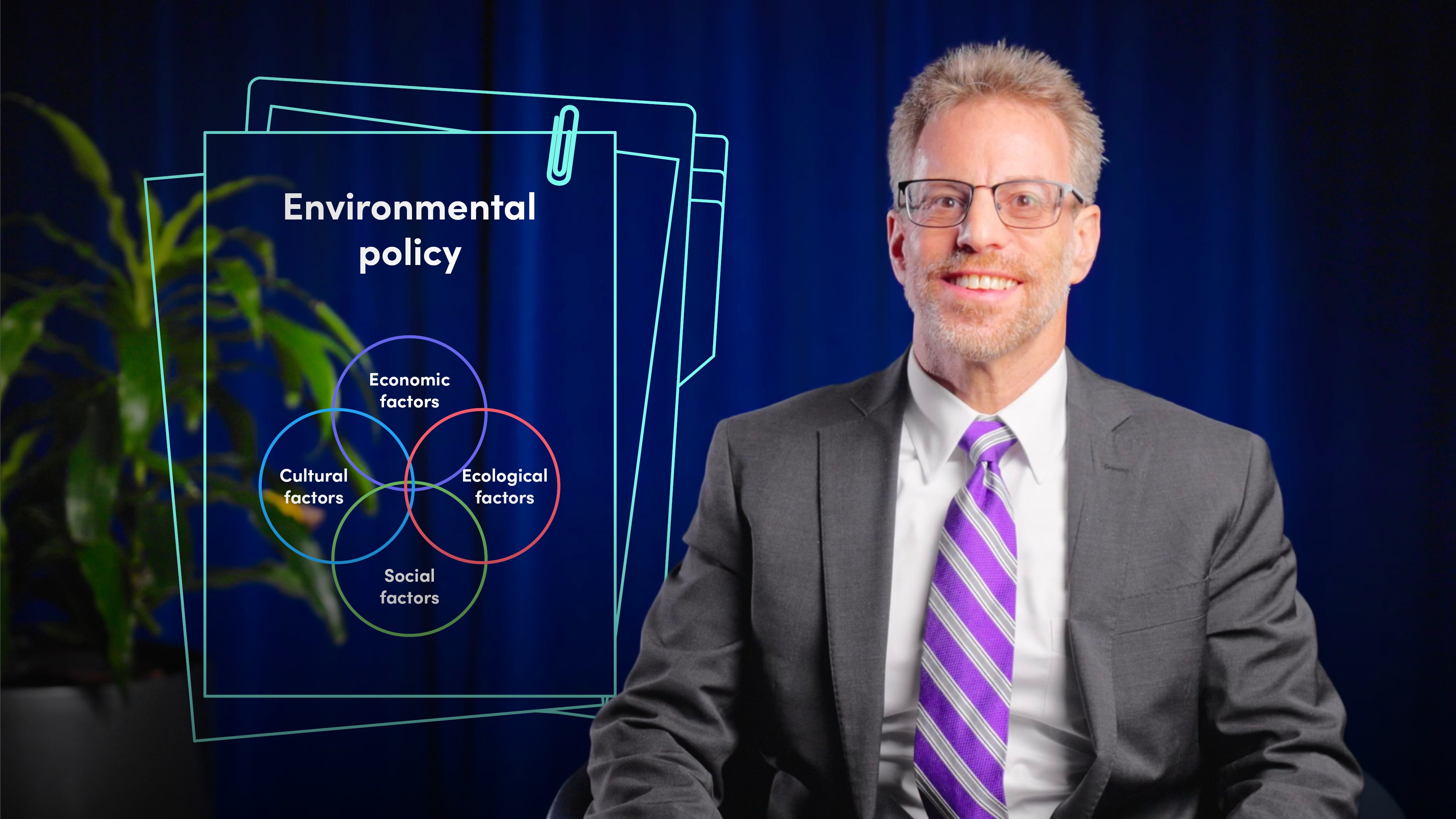
Development of Environmental Policy in the U.S.

Wayne Mayer
30 years: Sustainability and Corporate Social Responsibility Executive
In this video, Wayne explains the evolution of sustainable development and its importance in modern business. He discusses how the United Nations and key environmental laws like NEPA, the Clean Air Act, and the Clean Water Act have shaped sustainability practices. Wayne also explores the shift in corporate focus towards finance, outsourcing, and offshoring, and how businesses can leverage environmental regulations to innovate and gain competitive advantages.
In this video, Wayne explains the evolution of sustainable development and its importance in modern business. He discusses how the United Nations and key environmental laws like NEPA, the Clean Air Act, and the Clean Water Act have shaped sustainability practices. Wayne also explores the shift in corporate focus towards finance, outsourcing, and offshoring, and how businesses can leverage environmental regulations to innovate and gain competitive advantages.

Development of Environmental Policy in the U.S.
10 mins 34 secs
Key learning objectives:
Understand the concept of sustainable development
Outline the shift in corporate focus towards finance, outsourcing, and offshoring, and its impact on economic development
Understand key environmental laws such as NEPA, the Clean Air Act, Clean Water Act, Endangered Species Act, and CITES
Overview:
In the 1980s, the United Nations aimed to balance economic development across the three pillars of Sustainable Development: Social, Environmental, and Economic. Simultaneously, corporations began prioritizing finance, outsourcing, and offshoring, leading to a growing disconnect between economic growth and development. This trend stems from economist Milton Friedman’s 1970 argument that a business’s primary responsibility is profit maximization. Despite this corporate shift, significant environmental legislation emerged, influenced by events like the 1969 Cuyahoga River fire. Landmark laws such as NEPA, the Clean Air Act, the Clean Water Act, and the Endangered Species Act established frameworks for environmental protection. These regulations now guide pollution control, greenhouse gas regulation, and sustainable practices, influencing both business strategies and societal interactions.

Wayne Mayer
There are no available Videos from "Wayne Mayer"





















